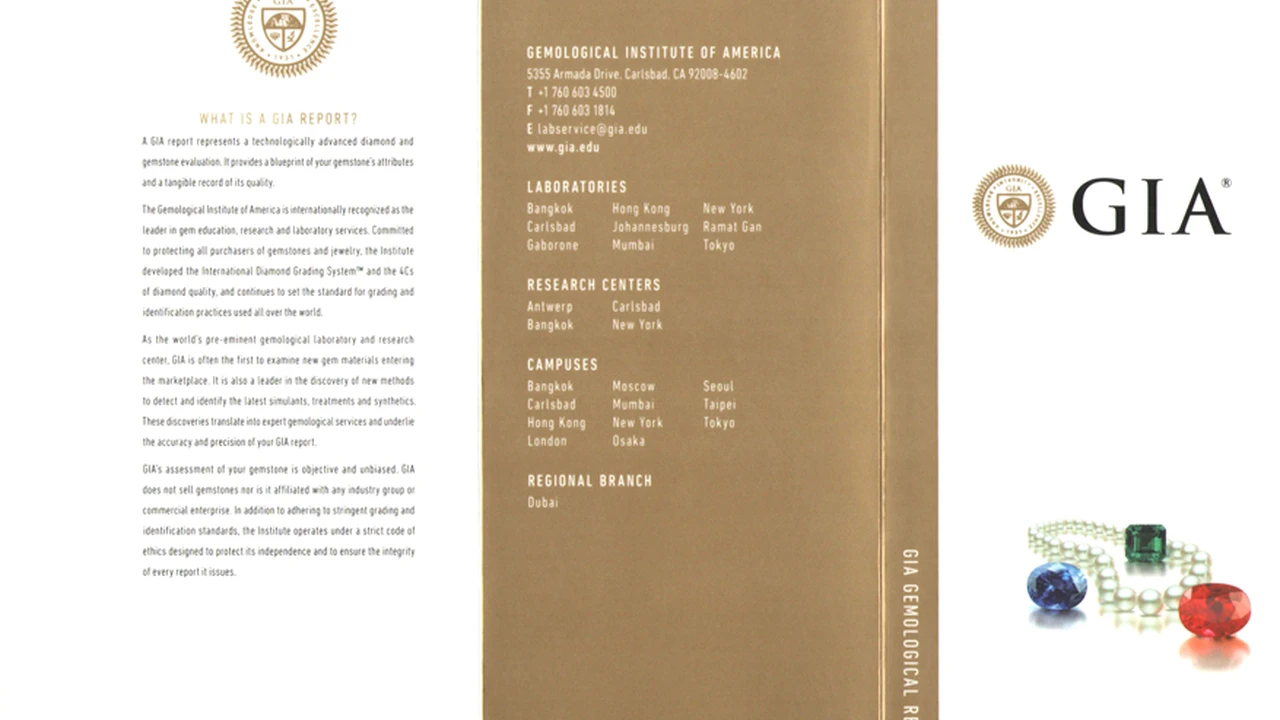Colored Gemstones vs Stocks Which is the Better Investment Choice
Colored Gemstones vs Stocks: A comparison of investment potential, risk factors, and returns in the US and Southeast Asian markets. Which asset class is right for you?

Introduction: Gemstones and Stocks - Two Paths to Investment
So, you're thinking about investing, huh? Good on ya! But where to put your hard-earned cash? The age-old question boils down to this: stocks or something a little…shinier? We're talking colored gemstones – sapphires, emeralds, rubies, the whole dazzling crew. Both stocks and gemstones have their allure, promising returns and portfolio diversification. But which one truly shines brighter in the US and Southeast Asian markets? Let's dive in and see what makes each tick.
Understanding Stocks: The Traditional Investment Route
Stocks, or equities, represent ownership in a company. When you buy stock, you're essentially buying a small piece of a business. Their value fluctuates based on the company's performance, market sentiment, economic conditions, and a whole host of other factors. You can buy stocks directly, through a broker, or invest in mutual funds and ETFs (Exchange Traded Funds) that hold a basket of stocks.
Pros of Investing in Stocks:
- Liquidity: Stocks are generally easy to buy and sell, meaning you can quickly convert your investment back into cash.
- Potential for High Returns: Historically, stocks have offered higher returns than other asset classes like bonds.
- Dividend Income: Some companies pay dividends, which are regular cash payments to shareholders.
- Transparency: Publicly traded companies are required to disclose financial information, making it easier to assess their performance.
Cons of Investing in Stocks:
- Volatility: Stock prices can fluctuate wildly, leading to potential losses.
- Market Risk: Economic downturns and global events can negatively impact the stock market.
- Company-Specific Risk: The performance of a single company can significantly impact the value of its stock.
- Requires Research: Successful stock investing requires thorough research and analysis.
Exploring Colored Gemstones: A Tangible Investment
Colored gemstones, on the other hand, are tangible assets – beautiful, rare, and potentially valuable. Investing in gemstones involves purchasing high-quality sapphires, emeralds, rubies, and other colored stones with the expectation that their value will appreciate over time. Unlike stocks, gemstones aren't tied to the performance of a particular company, but rather to factors like rarity, demand, and global economic trends.
Pros of Investing in Colored Gemstones:
- Tangible Asset: You physically own something of value.
- Diversification: Gemstones can provide diversification to your portfolio, as their performance is often uncorrelated with the stock market.
- Potential for Appreciation: Rare and high-quality gemstones can appreciate significantly in value over time.
- Hedge Against Inflation: Gemstones can act as a hedge against inflation, as their value tends to rise during periods of economic instability.
- Intrinsic Value: Gemstones possess intrinsic value due to their rarity and beauty.
Cons of Investing in Colored Gemstones:
- Liquidity: Gemstones can be less liquid than stocks, meaning it may take time to find a buyer and convert your investment back into cash.
- Subjectivity in Valuation: Gemstone valuation can be subjective and dependent on factors like color, clarity, cut, and carat weight.
- Storage and Insurance: You'll need to consider the costs of storing and insuring your gemstones.
- Requires Expertise: Successful gemstone investing requires knowledge of gemstone grading, market trends, and reputable dealers.
Colored Gemstone Investment: Sapphires, Emeralds, and Rubies - Products and Scenarios
Let's look at some specific examples of colored gemstones you might consider investing in, along with potential scenarios:
Investing in Sapphires: A Royal Choice
Product Example: A 5-carat, unheated Ceylon sapphire with excellent color and clarity. Estimated price: $15,000 - $25,000.
Investment Scenario: Hold this sapphire for 5-10 years, anticipating appreciation due to increasing demand for natural, untreated sapphires, particularly in the Southeast Asian market. Consider selling at auction or through a reputable gemstone dealer.
Alternative: Invest in a smaller, 2-carat sapphire of similar quality. Estimated price: $5,000 - $8,000. This offers a more accessible entry point for new investors.
Investing in Emeralds: The Green Standard
Product Example: A 3-carat, Colombian emerald with vivid green color and minimal inclusions (oil treatment is acceptable). Estimated price: $12,000 - $20,000.
Investment Scenario: Target the US market, where Colombian emeralds are highly prized. Emerald prices tend to be less volatile than some other gemstones. Hold for medium-term growth (3-7 years).
Alternative: Consider a Zambian emerald of comparable size and quality. Estimated price: $8,000 - $15,000. Zambian emeralds offer a more affordable alternative to Colombian emeralds while still providing excellent investment potential.
Investing in Rubies: The Passionate Pick
Product Example: A 2-carat, Burmese ruby with 'pigeon's blood' color and minimal treatment. Estimated price: $20,000 - $40,000 (or higher, depending on quality).
Investment Scenario: Burmese rubies are the most sought-after and command the highest prices. Their scarcity and exceptional color make them a strong long-term investment. Target affluent collectors in both the US and Southeast Asia.
Alternative: A Mozambique ruby with excellent color and minimal treatment. Estimated price: $8,000 - $16,000. Mozambique rubies have become increasingly popular and offer a more accessible option for investors seeking high-quality rubies.
Gemstone vs Stocks: Comparing Scenarios
Let's imagine you have $20,000 to invest. Here's how that might play out with stocks and gemstones:
Scenario 1: Investing $20,000 in Stocks
You invest in a diversified portfolio of stocks through an ETF that tracks the S&P 500. Historically, the S&P 500 has averaged returns of around 10% per year. However, in any given year, returns can be significantly higher or lower. You could potentially see gains of $2,000 or losses of $2,000 or more in a single year. Remember, past performance doesn't guarantee future results.
Scenario 2: Investing $20,000 in Gemstones
You purchase a 3-carat Colombian Emerald. High-quality emeralds have historically shown steady appreciation, particularly those with excellent color and clarity. While appreciation rates can vary, you might expect to see an average annual increase of 5-8% in the value of your emerald. This translates to a potential gain of $1,000 - $1,600 per year. The emerald also provides the enjoyment of owning a beautiful and tangible asset.
Market Dynamics: US vs. Southeast Asia
The US and Southeast Asian markets have distinct characteristics that influence investment decisions:
United States:
- Mature and well-regulated market.
- High demand for Colombian emeralds and classic gemstones.
- Sophisticated investors with access to extensive research and analysis.
Southeast Asia:
- Rapidly growing economies with increasing wealth.
- Strong cultural affinity for colored gemstones, especially rubies and sapphires.
- Growing demand for investment-grade gemstones.
- Potential for higher returns due to emerging market dynamics.
Key Considerations for Both Investments
Before jumping into either stocks or gemstones, consider these crucial factors:
Risk Tolerance: How much risk are you comfortable taking? Stocks are generally riskier than gemstones, but also offer the potential for higher returns.
Investment Horizon: How long are you willing to hold your investment? Gemstones typically require a longer-term investment horizon to realize their full potential.
Due Diligence: Research is essential for both stocks and gemstones. Understand the market, the specific asset you're investing in, and the potential risks and rewards.
Diversification: Don't put all your eggs in one basket. Diversify your portfolio across different asset classes to mitigate risk.
Gemstone Pricing: What Drives the Cost?
Understanding gemstone pricing is critical. The '4 Cs' – Color, Clarity, Cut, and Carat Weight – are the primary factors, but other elements also play a significant role:
Color: The most important factor. Vivid, saturated colors command higher prices.
Clarity: The presence and type of inclusions (internal flaws) affect value. Fewer inclusions are generally better.
Cut: A well-cut gemstone maximizes brilliance and sparkle.
Carat Weight: Larger gemstones are rarer and more valuable (but quality is still paramount).
Treatment: Treatments, such as heat treatment or oiling, can enhance a gemstone's appearance but may also affect its value. Untreated gemstones are typically more desirable.
Origin: The origin of a gemstone can significantly impact its price. For example, Burmese rubies and Colombian emeralds are highly prized.
Products Recommendation: Specific Gemstone Examples
Here are a few specific gemstone examples that could be good investment choices (prices are estimates and can vary depending on the dealer and market conditions):
- Product: 1.5 Carat Unheated Sri Lankan Sapphire. Price: $3,000 - $6,000. Why: Excellent color saturation, no heat treatment, from a reputable origin. Suitable for the Southeast Asian market.
- Product: 2 Carat Colombian Emerald with Minor Oil. Price: $6,000 - $12,000. Why: Good size, desirable origin, minor oil treatment is acceptable. Target the US market.
- Product: 1 Carat Mozambique Ruby, Heated. Price: $4,000 - $8,000. Why: Vivid red color, affordable entry point, heat treatment is common. Good for diversification.
The Verdict: Which Investment is Right for You?
There's no one-size-fits-all answer. The best investment choice depends on your individual circumstances, risk tolerance, and investment goals. Stocks offer liquidity and potential for high returns, but also come with higher volatility. Colored gemstones provide a tangible asset, diversification, and potential for appreciation, but require more expertise and a longer-term investment horizon.
Maybe a blend is the right answer. A diversified portfolio might include a mix of stocks, bonds, and, yes, even a sparkling sapphire or two. Do your homework, understand the risks and rewards, and choose the investments that align with your financial goals.
:max_bytes(150000):strip_icc()/277019-baked-pork-chops-with-cream-of-mushroom-soup-DDMFS-beauty-4x3-BG-7505-5762b731cf30447d9cbbbbbf387beafa.jpg)






